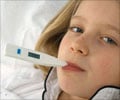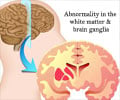An international team of researchers has identified a gene linked to the most common type of epilepsy called Rolandic epilepsy, which is associated with seizures starting in one part of the brain.
The team at Columbia University Medical Centre and found a region on chromosome 11 that was linked with Rolandic epilepsy.While comparing this region in people with Rolandic epilepsy to unaffected controls, the researchers pinpointed the gene, called ELP4.
"Epilepsy medications are effective for many children but there is concern that some of the cognitive and behavioral problems that children with epilepsy often suffer might be attributable in part to these drugs," pediatric neurologist Deb Pal, M.D., Ph.D., Columbia University research scientist and senior author of the study.
"Most epilepsies have a genetic influence, much of which has yet to be discovered. If we knew the actual genetic causes, then we could try to stop or reverse the processes that lead to seizures and other neurological impairments.
"This finding will hopefully help lead us to the right intervention," he added.
ELP4 has never before been linked to a human disease but is related to a group of genes (transcriptional regulators) that recently have been associated with other common forms of epilepsy. All these genes appear to influence the organization of brain circuits during development.
Advertisement
"Seizures are one, but not the only, consequence of these children's slightly altered brain development," he added.
Advertisement
Seizures typically start in the morning just after the child wakes up and cause a loss of muscle tone in the face and a loss of speech. Seizures stop on their own after several minutes. Most children grow out of the disorder by adolescence.
The study is published in European Journal of Human.
Source-ANI
PRI/SK















